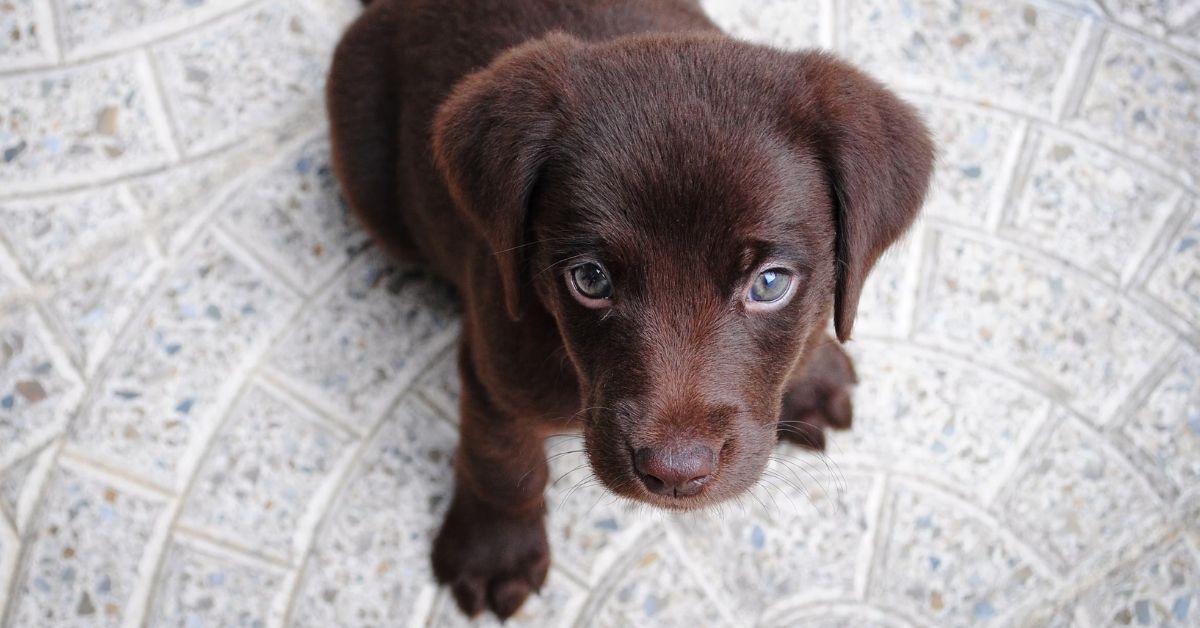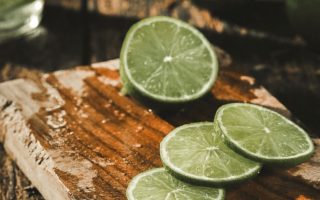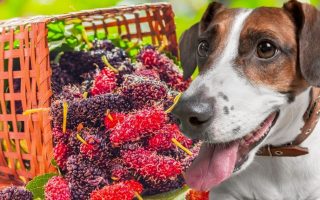Your lovable Labrador retriever is America’s sweetheart, continuously ranking as the AKC’s most popular breed even in 2023.
The high-spirited sidekicks can range from 65-80 pounds (for males) and 55-70 pounds (for females) and stand between 21.5-24.5 inches tall.
With lots of love and care, your medium-to-large-sized dog will be a family companion for approximately 10-12 years.
As a new lab owner you might be asking – how much to feed a lab puppy?
In general, your labrador will do well on age-appropriate, high-grade dog food, which can be store-bought or home-prepared with your veterinarian’s approval.
Puppies, adults, and senior dogs all have different dietary needs.
And labradors love people food, too – so it’s best to watch out for what human foods are safe or not. Labradors can gain weight easily and seem to always be hungry.
So, even though they’re an active breed, it’s not hard for them to fall into the overweight category – which is usually in direct result to overfeeding.
Watching your lab’s quality and quantity of food intake from the puppy stage on is very important so he or she can be as healthy as possible.
So if you’re wondering about how much to feed a lab puppy, we put together this Labrador food guide – just for YOU!

Labrador Feeding Chart by Age
| Age | Times Per Day | Quantity in Cups Per Feeding |
|---|---|---|
| 6-12 Weeks Old | 4 (puppy food) | 2 cups |
| 3-6 Months Old | 3 (puppy food) | 1-2 cups |
| 6-12 Months Old | 2 (puppy food) | 1-2 cups |
| Over 1 Year Old | 2 (adult food) | 1-2 cups |
| 7 Years Old + | 1-2 (adult or senior food) | 1-2 cups |
How Much Should I Feed My Lab Puppy?
For the first 8 weeks of your pup’s life, it is best for him or her to nurse from mom. The weaning process may begin around 6 weeks of age, and at that time, puppy chow can be introduced.
Commercially manufactured puppy food is specially formulated to meet the nutritional needs for normal development.
Puppies start out needing many small meals a day – just like human babies. Between 6-12 weeks of age, four feedings per day should be offered using no more than 2 cups of dog food at a time.
At 3-6 months of age, you can decrease your pup’s feedings from four to three times a day.
Related:
When Do Labs Calm Down
Sometime between 6-12 months, you can begin feeding twice daily. And after 1 year, you can introduce adult chow in two portions daily.
Most, but not all, labradors will finish their meals quickly.
Feed at regular intervals to discourage picky habits, and don’t leave their food out for more than 10-20 minutes.
Depending on your furry friend’s eating habits, when he or she reaches the senior years (around 7 years old), you can leave food out for grazing throughout the day.
Just be sure they don’t gobble it all at once and make themselves sick!
You have to trust your specific pet – and any other four-legged companions you may have in your household.
How much you feed your lab each day depends on your particular dog’s size and metabolism.
Most store-bought dog foods have a specific feeding guide based on your puppy’s weight that you can reference.
Premium food with higher-quality ingredients has higher nutritional density as well, so you can feed your dog less to gain the same results.
And if your puppy skips a meal or doesn’t eat his portion in one setting, don’t worry.
You might just need to reduce the amount served, or she might be ready to eliminate a feeding.
Also, if you’re giving treats for training, you may need to adjust the amount of food you feed at mealtime or keep the treats as small as possible.
Best Puppy Food for Labs
- Eagle Pack Large and Giant Breed Puppy Food (Better reviews in 2023)
- Wellness Core Grain-free Dry Puppy Food
- Blue Buffalo Large Breed Puppy (Better reviews in 2023)
- Taste of the Wild Grain Free Puppy Formula
- Orijen Large Breed Puppy Formula
- Hill’s Science Diet for Large Breed Puppies
- Royal Canin Puppy Food for Labrador Retrievers
Labradors fall into the category of large-breed when it comes to specialized dietary needs, due to their risk of hip dysplasia.
A labrador can grow from just under a pound at birth to over 70 pounds in one year.
This rapid growth means their bones must change quickly, and this must be supported by their nutrient intake.
And, unlike smaller breeds that can be fed as adults around 9-12 months, larger breeds like Labradors are still considered puppies until 12-18 months.
It’s better to err on the side of caution and feed puppy food longer than switching to adult food too soon.
There is a large variety of high-quality puppy food available for you to feed your lab.
When looking for a puppy food for your labrador, look at labels that meet the Association of American Feed Control Officials (AAFCO) nutrient profiles for “growth,” “all life stages,” and “including the growth of large size dogs.”
Foods with these labels meet the nutrient guidelines for the proper amount of calcium and phosphorus for your large-breed companion.
How Much Do Labrador Puppies Grow Each Week?
Labradors come in a wide variety of sizes, so average growth and weight figures can be misleading.
On average, lab puppies will weigh just over two pounds for each week of age.
For example, an 8-week-old pup might weigh around 16 pounds, and a 4-month old puppy might weigh around 32 pounds.
Don’t Miss: When Do Labs Stop Growing
If you’re concerned about your puppy’s growth, you can weigh your puppy weekly to record her progress and adjust food intake if needed.
Weighing a squirming puppy might sound difficult, but it’s relatively easy!
Just weigh yourself, then weigh yourself holding the puppy and subtract the difference.
How Much Exercise Does a Labrador Need a Day?
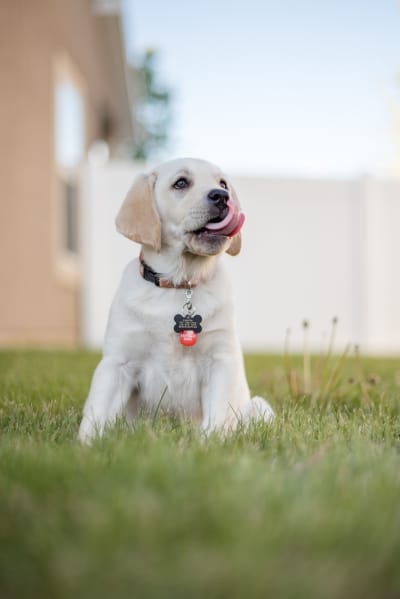
Your labrador is a high-energy, active breed that needs a lot of exercise every day.
Without proper exercise, labs are prone to destructive behavior to release their energy.
Take your pup on at least one, long, brisk walk each day.
As they get older, and if you are the adventurous type like we are, then you can determine is your dog ready to hike or not.
A game of fetch is also an easy way to get your dog running off his energy. Labs are in the sporting group of dog breeds, so hunting trips and agility, obedience and tracking activities are all good ideas to keep your puppy moving.
But, keep in mind, that this boundless amount of energy keeps them hungry, and your lab could act hungry all day.
Remind yourself that they don’t really need all that food, avoid overfeeding, and they’ll be your whole family’s best friend for many years.
Related: Are Labs Good Apartment Dogs
Best Dog Food for Labs with Skin Allergies
If your labrador has allergies, you may have to feed them hypoallergenic food or look for a food with limited ingredients.
Hypoallergenic foods:
Limited Ingredient foods:
Food allergies can show up in a few different ways on your Labrador’s skin, including their ears.
If your pup has hot spots on their skin, sore spots from excessive licking, or constant ear infections (which could be a buildup of yeast), your companion might be suffering from a common food allergy or allergies.
Please consult your veterinarian to discuss possible allergies and foods to avoid and foods to eat.
The top 5 food allergens for Labradors include
Beef
Proteins are common allergens. Feeding a single food for years can increase the possibility of your dog developing an intolerance or allergy to that protein.
Since beef is one of the most common dog food ingredients, it’s a common allergy to watch out for. To avoid developing, while a puppy, rotate the base protein that you feed.
If you suspect your dog has a protein allergy, you can experiment with a different protein to see if his symptoms get better.
Dairy
Some dogs are lactose intolerant, leading to fast, diarrhea and/or vomiting. It can also lead to skin itchiness.
It’s best to ask your vet, but in the meantime, try avoiding all forms of dairy to see if your pup improves.
Wheat
While dogs are carnivores, most can tolerate grains with no problems. The select few, though, can experience an allergic reaction.
For labradors, this might show up as reoccurring ear infections. If you suspect this, please check with your vet or pet nutritionist.
There are many grain-free foods on the market these days, so it’s not difficult to find the perfect one for your pal.
Eggs
Unfortunately, some dogs cannot tolerate the proteins present in egg yolk. But, fortunately, it’s pretty easy to avoid eggs if you’re a dog – just check food labels to be sure.
Chicken
A chicken allergy is similar to beef, as it’s an allergic reaction to the specific protein present.
Chicken, chicken meal, and chicken by-products are found in a lot of dog foods since it’s a cheaper ingredient filler.
Double-check all the ingredients to avoid, but there are plenty commercially manufactured, dry and wet, foods – and even treats – available to feed your pup.
What Human Foods are Bad for Labs?
Who can resist your labrador’s perpetual puppy-dog eyes – especially when they’re staring up at you while you’re at the dining room table?
But just because we’d like to give our puppy everything – including the extra food on our plate – doesn’t mean it’s always a good idea.
According to the American Kennel Club (AKC), a few human food items are not safe for your labrador to eat.
Even some fruits and vegetables can be dangerous for your dog’s body and can cause severe health problems.
Pecans, Walnuts and Macadamia Nuts
These are some of the most poisonous foods for dogs. They can contain tremorgenic mycotoxins, which have the potential to cause tremors and seizures.
Almonds, while not toxic, are still dangerous for your lab to eat because they are not easily digested, creating gastric intestinal distress.
Salted Foods
In general, salt is especially dangerous because it can increase water retention, which is potentially fatal for labs.
Watch out for heavily salted foods, and even those salt-block Christmas ornaments/decorations.
Chocolate
This yummy treat for humans is a big no-no for labradors – and all other dogs as well. Chocolate contains methylxanthines, which are toxic stimulants that stop a dog’s metabolic process.
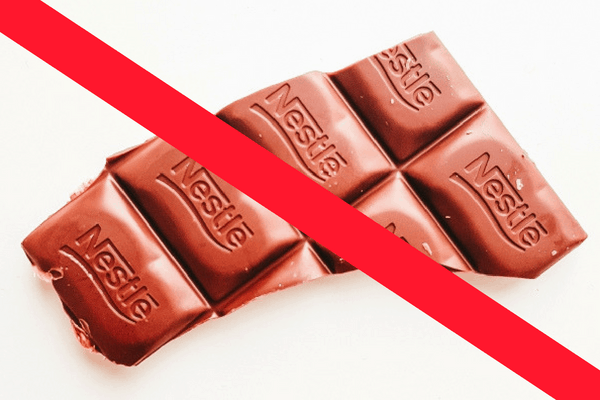
Even a tiny bit can cause diarrhea and vomiting, while large amounts could lead to seizures, irregular heartbeat and even death.
Cinamon
Cinnamon is another one to avoid – it can irritate your pup’s mouth and too much could lower your dog’s blood sugar too much.
Garlic
As part of the Allium family along with onions, leeks, and chives, garlic can create anemia in dogs, causing an elevated heart rate with the potential for collapsing.
If you think your pup has eaten any garlic or onions, monitor him for a few days – this type of poisoning has delayed symptoms.
Grapes
Grapes and raisins are known to be highly toxic to dogs.
Though unsure why, ingesting grapes can lead to sudden kidney failure in dogs, which can be fatal.
Ice Cream and Milk
I know this one may seem sad, but you really shouldn’t feed your furry friend ice cream.
Dairy is hard for canines to digest.
What Human Foods are Safe to Eat?
Bread
Plain bread has no nutritional value for your pup, but it’s safe to consume – except if your dog is overweight.
Homemade is the better alternative, as store-bought is generally packed with preservatives.
Cashews
Unsalted cashews are fine – but only a few at a time.
They have healthy vitamins and minerals – calcium, magnesium, antioxidants – but they’re still heavy on fat calories.
Cheese
Cheese is considered safe in moderate quantities, as long as your pup isn’t lactose intolerant.
Coconut
Coconut is perfectly safe for your furry friend. It can help with bad breath and coconut oil can help clear up skin conditions such as hot spots, flea allergies and itchy skin.
Corn
Most labs love corn – especially the popped variety. Corn is one of the most common ingredients in dog foods, so it is safe for your labrador to enjoy.
Just make sure it’s off the cob – ingesting that might cause intestinal blockage.
Also, while uncommon, some labradors are allergic to corn found in many commercially manufactured dog foods.
If your pup has ongoing hot spots and itchy skin, this might be worth asking your veterinarian.
Eggs
Fully cooked eggs are great for your lab to enjoy – scramble up an extra one or two for breakfast!
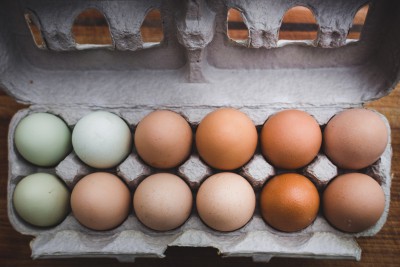
Fish
Fish, especially salmon and sardines, is packed with good fats and healthy amino acids for your pup to enjoy.
Be sure to pick out any tiny bones, and fully cook the fish before giving it to your four-legged friend. Shrimp and tuna fit in on the OK list here as well.
If feeding canned tuna, a little bit goes a long way, since it contains small amounts of mercury and sodium.
Ham
Your pup will love ham! It can be high in sodium and fat, so just treat your companion to a little at a time.
Honey
Feeding your dog small amounts of honey can help with allergies, and it’s packed with lots of nutrients, including vitamins A, B, C, D, E, potassium, calcium, magnesium, copper and antioxidants. Yum!
Peanuts and Peanut Butter
Unlike almonds, peanuts and peanut butter are safe and delicious treats for your Labrador.
Peanuts offer a good source of protein and heart-healthy fats as well.
Be sure to stick to the unsalted varieties – and in peanut butter, avoid xylitol, a sugar substitute that can be toxic.
Pork and Turkey
Fully cooked pork and turkey is a healthy and easily digestible protein for your Lab.
Pay attention to spices – you don’t want to feed your pup any snack covered in garlic.
Also, remove excess fat and skin and check for bones that can splinter while eating.
Quinoa
Quinoa is a protein-packed grain that can be found in some high-quality dry dog foods.
It’s perfectly safe for your furry friend to have.
Wheat/Grains
While dogs are carnivores, grains are perfectly fine for them to have and can provide healthy protein, fatty acids, and fiber.
As with corn, some labradors might be allergic to wheat and other grains, so check with your veterinarian if your pal has any allergy symptoms.
Yogurt
While most dairy is best avoided, plain yogurt is an OK snack for your furry friend every once in a while.
Yogurt has good bacteria that will strengthen your dog’s digestive system with probiotics.
Skip the varieties with extra sugar and artificial sweeteners, though.
Wrapping It pUp
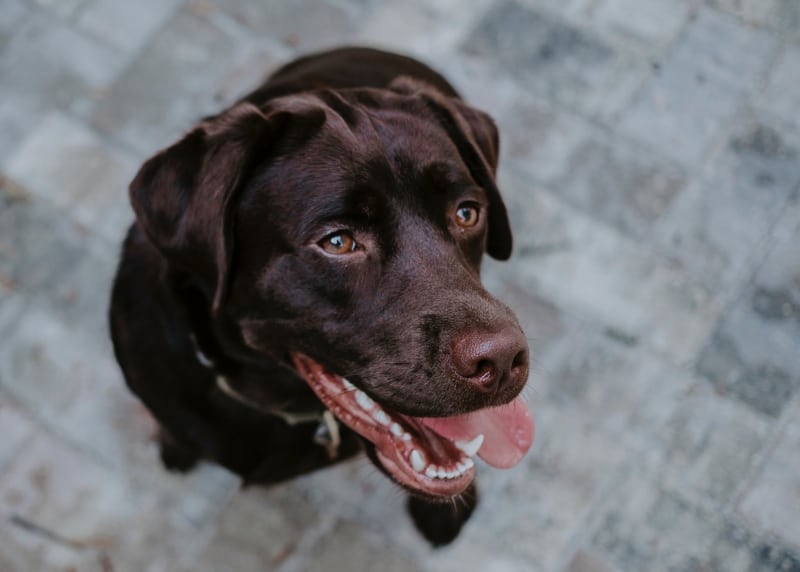
Congratulations to YOU for looking out for your Lab’s best nutritional interests!
Your dog will no doubt live a long and healthy life thanks to the research you are putting into their dog food by following this Labrador feeding guide.
You will need some trial and error to find the right formula that your lab will respond to the best.
Just keep paying attention to it’s needs and over time you might have to make adjustments.
As long you remember dogs have nutritional needs just like you and I then feeding your lab the right the amount will be easy.
That along with plenty of exercise (yes, that means you too!) will have you both enjoying your best lives!
You Might Also Like:

